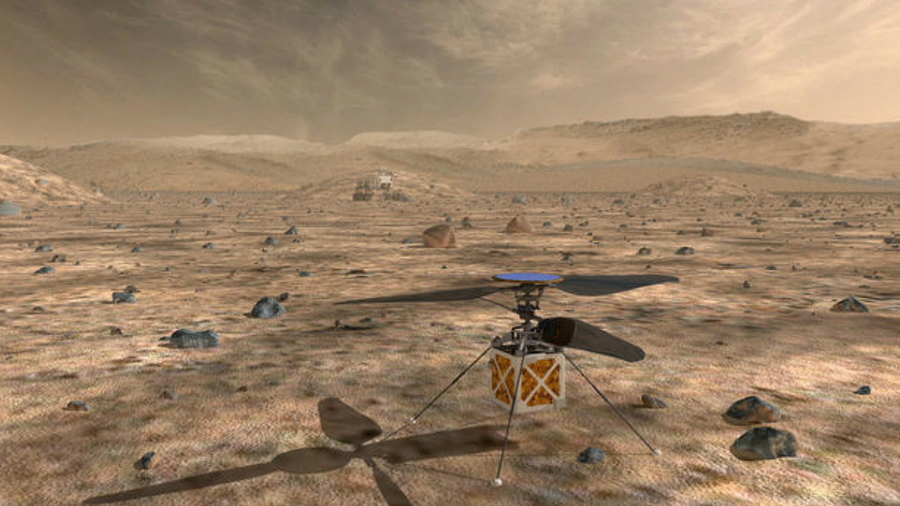NASA's Ingenuity drone helicopter is preparing to make a historic take-off on Mars – and you can tune into a livestream of the launch very soon.
The Ingenuity drone, which would be the first powered flight ever on another planet, had been due to attempt its lift-off on April 11, but was delayed while NASA sorted out a software fix for a technical problem.
But if all goes well, the drone helicopter's first autonomous flight should be happening today – with the data making it back to earth and mission control a few hours later.
The Ingenuity drone won't be circling the planet on its maiden flight, with the demo expected to see if lift to about 3m and hover for around 20-30 seconds, before landing. But it'd be a historic moment for flight, hence NASA's decision to equip the drone with a piece of fabric from the plane of the Wright Brothers'.
The good news for tech fans is that you can tune into a livestream of the mission control team (hopefully) receiving the data back from the Ingenuity drone this morning – here's how to watch it from your phone, tablet or laptop.
How to watch the NASA Ingenuity drone livestream
Fancy tuning into a livestream of the first powered flight from Mars? Fortunately, there are quite a few ways to do it – starting with NASA's YouTube livestream.
You can watch that either below or at NASA's Youtube channel from 6.15am ET / 11.15am GMT / 8.15pm AEST today. The NASA stream is expected to show the mission control team receiving the first data from the drone helicopter, assuming all goes well.
You'll also be able to watch the same livestream on NASA's Twitter, Facebook and Twitch pages, or in the official NASA app for smartphones and tablets.
If the Ingenuity drone's take-off is successful, there'll also be a news briefing today at 2pm ET / 7pm BST, which works out as 4am AEST on April 20 in Australia.

What tech is powering the NASA Mars drone?
NASA says that the Ingenuity drone helicopter is solely a demonstration of tech, rather than something that will support the findings of the Perseverance mission that it's part of – but it's a mighty impressive demonstration all the same.
The solar-powered aircraft is actually powered by a Qualcomm Snapdragon 801 chip, the same as the one you'd find in Android phones from five or six years ago like the Samsung Galaxy S5.
But that's still more than powerful enough to power its flight in the thin Martian air and support its on-board computers, navigation sensors and two cameras.
These two cameras are a black-and-white, 0.5MP navigation camera and a 13MP front-facing one. It's not yet clear what kind of images it'll send back, but we should also hopefully see some video shot by the Perseverance Rover – which itself has some pretty impressive cameras, as we saw from its incredible video of the Mars landing.
- These are the best drones you can buy right now
from TechRadar: Photography & video capture news https://ift.tt/3ao6iV5
via IFTTT






0 kommenttia:
Lähetä kommentti